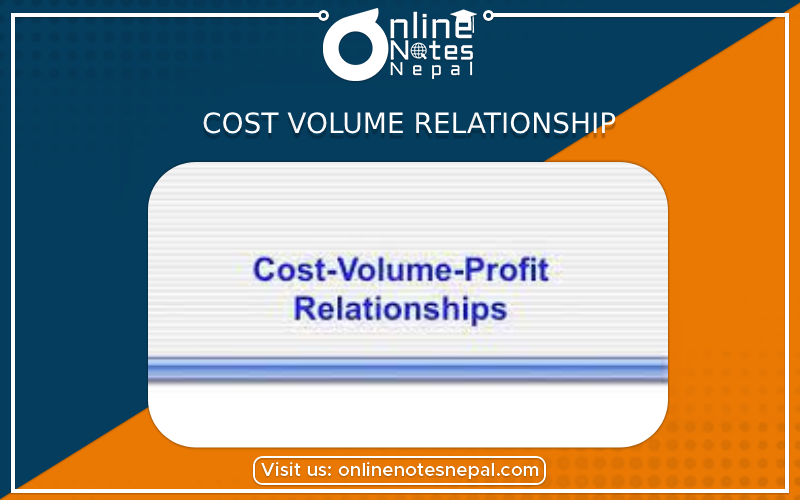Published by: Anu Poudeli
Published date: 10 Jul 2023

The cost-volume relationship, commonly known as the cost-volume-profit (CVP) analysis, is a key concept in management accounting and finance that investigates how variations in sales volume affect the expenses and profits of a company. It assists organizations in making sound judgments about pricing, production levels, and overall profitability.
The following are some major points and concerns about the cost-volume relationship:
1. Fixed Cost : Fixed costs are expenses that do not change independent of the degree of production or sales volume. Rent, salary, and insurance are some examples. Fixed costs per unit decrease when sales volume grows because fixed expenses are dispersed over a larger number of units in the context of cost-volume analysis.
2. Variable Cost : Variable costs change in direct proportion to changes in sales volume. Direct materials, direct labor, and variable overhead are some examples. Even as sales volume changes, variable expenses per unit generally remain constant.
3.Contribution margin: The gap between sales revenue and variable costs is the contribution margin. It denotes the amount of money available to cover fixed costs and contribute to profit. Although the contribution margin per unit remains constant, the total contribution margin grows as sales volume grows.
4. Break even point : The breakeven point is the level of sales volume at which total revenue equals total costs, resulting in a profit or loss of zero. It is the point at which a corporation has covered all of its fixed costs. The company begins to generate profit once it has passed the breakeven point.
5.Profit analysis: CVP analysis aids in determining how changes in sales volume affect profitability. Businesses can examine the impact of various scenarios and make educated decisions by considering the link between sales, costs, and profits. They can, for example, investigate how changes in selling price, variable costs, or fixed expenses effect profitability.
6. Assumption and Limitation : CVP analysis is based on specific assumptions, such as a linear cost-revenue connection, stable selling prices, fixed cost structures, and consistent efficiency and productivity levels. Because these assumptions may not hold true in all instances, CVP analysis should be used as a guide rather than an exact predictor of results.
7. Sensitivity Analysis : Sensitivity analysis is the process of determining the impact of changes in critical elements such as sales volume, selling price, and costs on profits. Businesses can identify crucial variables and evaluate the risks and possibilities associated with changes in those variables by analyzing various scenarios.
The cost-volume relationship gives useful insights into a company's financial dynamics, enabling managers to make strategic decisions about pricing, production levels, cost control, and overall profitability. Companies may optimize their operations and achieve their financial goals by understanding the relationship between costs, volume, and profits.